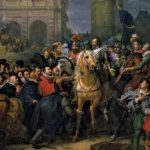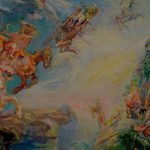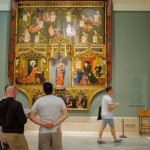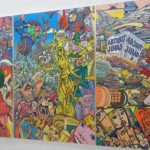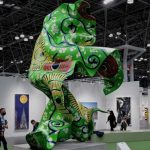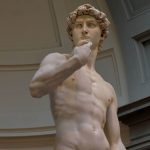From the mid-1950s to the 1960s, a movement revolutionized the art world by blurring the lines between high and low culture. With its vibrant colors, bold imagery, and incorporation of mass-produced objects, Pop Art became a powerful commentary on consumerism, popular culture, and the changing dynamics of post-war society. This article delves into the Pop Art movement’s origins, key characteristics, and notable artists.
Origins of Pop Art
Pop Art emerged as a response to the dominant artistic trends of the time, which often emphasized abstract expressionism and existentialism. Influenced by the burgeoning consumer culture and the rise of mass media, artists sought to incorporate popular imagery and challenge the notions of what could be considered art. The movement found its roots in the artistic scenes of the United States and the United Kingdom, with artists on both sides of the Atlantic making significant contributions.
Key Characteristics of Pop Art
Use of Popular Imagery
Pop Art drew inspiration from everyday objects, advertising, comic books, and mass-produced consumer goods. These elements were often taken from their original context and transformed into works of art.
Bright Colors and Bold Compositions
Pop Art embraced vibrant, eye-catching colors, often using flat areas of color to create a graphic and visually impactful effect. Artists employed bold compositions and enlarged images to capture the viewer’s attention.
Appropriation and Repetition
Artists in the Pop Art movement often used techniques of appropriation and repetition, incorporating and repeating familiar images or objects to convey a sense of familiarity and accessibility.
Irony and Satire
Pop Art employed irony and satire to critique consumer culture and societal norms. It juxtaposed seemingly unrelated images and challenged the viewer’s perception of art and popular culture.

Notable Pop Artists
Andy Warhol
Arguably the most iconic figure of the Pop Art movement, Warhol’s works, such as his Campbell’s Soup Cans and Marilyn Monroe series, brought everyday objects and celebrities into the realm of high art. Warhol’s use of silk-screening techniques and his fascination with fame and consumer culture made him a central figure in the movement.
Roy Lichtenstein
Known for his bold, comic book-style imagery, Lichtenstein’s works featured enlarged dots, bold outlines, and speech bubbles, reminiscent of the printing techniques used in comic books. His iconic paintings, like “Whaam!” and “Drowning Girl,” exemplified the Pop Art aesthetic and its fascination with popular culture.
Claes Oldenburg
Oldenburg’s sculptures, often monumental in size, took ordinary objects like hamburgers, typewriters, and clothespins and transformed them into larger-than-life sculptures. His playful and exaggerated representations challenged viewers’ perceptions and invited them to reconsider the ordinary.
Richard Hamilton
A key figure in the British Pop Art movement, Hamilton’s works explored the relationship between art and technology. His collage-like compositions combined images from popular magazines, advertisements, and product packaging, reflecting the impact of mass media on society.











